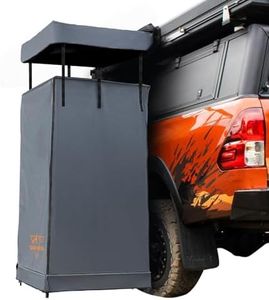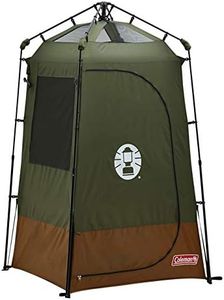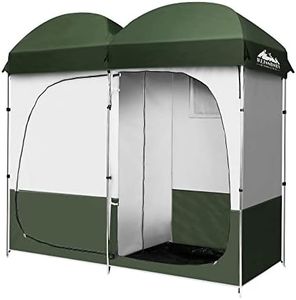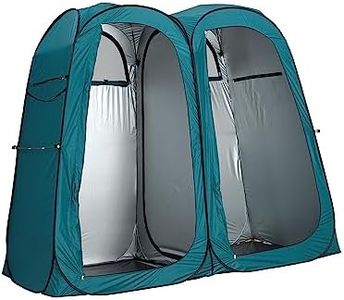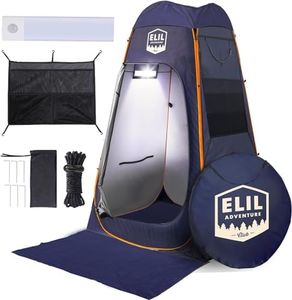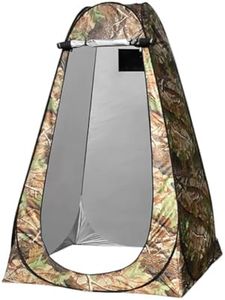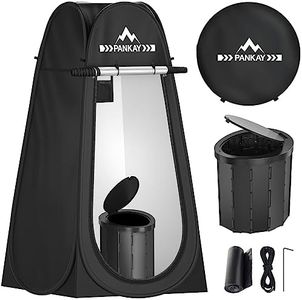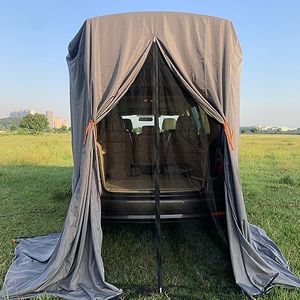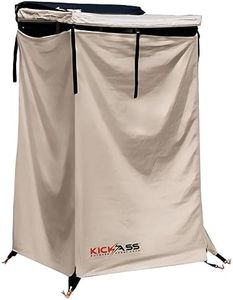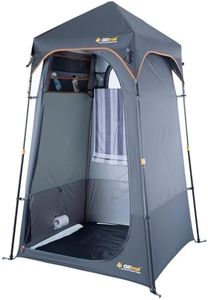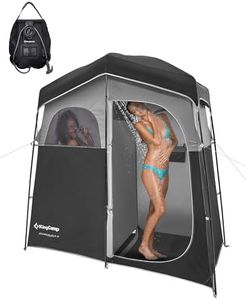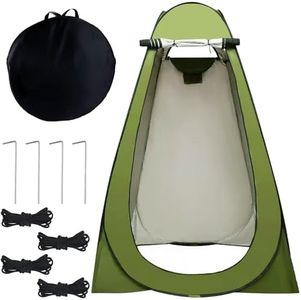We Use CookiesWe use cookies to enhance the security, performance,
functionality and for analytical and promotional activities. By continuing to browse this site you
are agreeing to our privacy policy
10 Best Shower Tents
From leading brands and best sellers available on the web.Buying Guide for the Best Shower Tents
Choosing a shower tent is all about finding a balance between usability, portability, and privacy. These tents are great for camping, festivals, beach outings, or any outdoor activities where access to private shower or changing space is needed. When picking a shower tent, consider where you’ll use it, how often you'll be setting it up, and whether you'll be using it for showering only, changing clothes, or even as a toilet enclosure. Pay attention to the setup mechanism, materials, stability, size, and ventilation, as these will determine your comfort and convenience.Size and HeightThis refers to the overall dimensions and vertical clearance available inside the tent. Size is important because it affects your comfort and ability to move around while showering or changing. Smaller tents (around 3ft x 3ft and 6ft high) are highly portable but can feel cramped, especially for taller people or when you need to use bigger camping showers. Medium-sized tents give a bit more room for movement and can sometimes fit a small portable toilet. Larger or extra-tall tents (over 7ft high or with extra floor space) add a lot of comfort, making it easier to wash and change without bumping into the walls. To pick the right one, consider your height, any gear or shower you wish to use inside, and whether you need extra space for changing.
Portability and WeightThis specification deals with how easy it is to carry, transport, and set up the shower tent. Lightweight and compact models are best if you’ll be backpacking or moving campsites often, as they are easy to pack and carry but may sacrifice some durability or space. Heavier tents often provide better stability and features but are best suited for car camping or places where you won't have to carry them far. Think about how you’ll be traveling and how much walking you'll need to do with your tent to choose the right balance between portability and sturdiness.
Material and Water ResistanceThis refers to the fabric used for the walls and floor as well as how well they keep water out and privacy in. Most shower tents are made from polyester or nylon with a water-repellent coating. Better-quality materials last longer and dry faster, which is important for multiple uses or wet conditions. Some tents have built-in floors while others don't; a floor helps keep your feet clean and dry, but makes drainage more complicated. Choose materials that dry easily and are strong enough for your intended use, and pay attention to whether seams are sealed to prevent leaks.
VentilationVentilation is about how well air can flow in and out of the tent. Good ventilation prevents humidity from building up inside and keeps the tent cooler in hot weather. Look for mesh windows, roof vents, or double-door designs. Fewer or smaller vents can lead to a stuffy, uncomfortable experience. If you expect to use the tent mainly in hot weather or after vigorous activities, prioritize models with multiple or large vents to keep things fresh.
Privacy FeaturesPrivacy features include the thickness and opacity of the tent fabric, covered windows with closures, and secure doors. Some tents may have dark or double-layered panels to prevent silhouettes from being seen when the interior is backlit. If privacy is a top concern, especially in busy campsites or beaches, choose a tent with fully opaque panels and zippers or flaps that close securely.
Setup MechanismThis refers to how the tent is assembled. Pop-up designs use a spring coil to open instantly and are best for quick, single-person setups, though they may be less stable in wind. Pole-frame setups take more time but provide greater stability and can handle rougher weather. Pick a setup that matches your strength, patience, and the conditions you expect to face—if you move sites often, opt for pop-ups; if you want something more rugged, choose a tent that uses poles.
Extra FeaturesExtras can include hooks or pockets for holding your towel or toiletries, a removable floor for drainage, skylights, or external shower hose access. These additions can make a big difference in convenience and comfort. Think about your habits and preferences; for example, if you like to keep things organized, look for several storage pockets, or if drainage is a concern, pick a tent with a mesh or openable floor.


